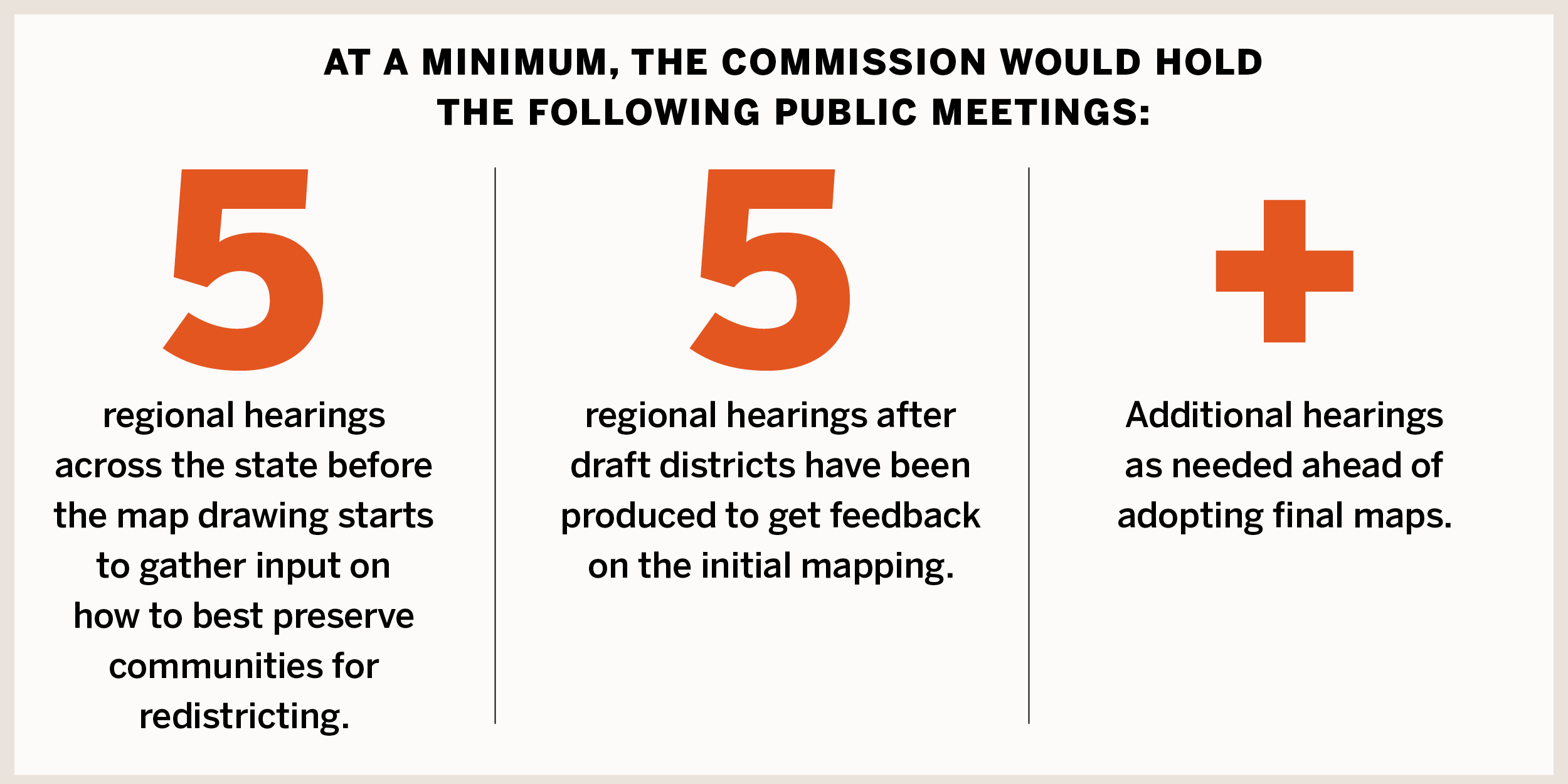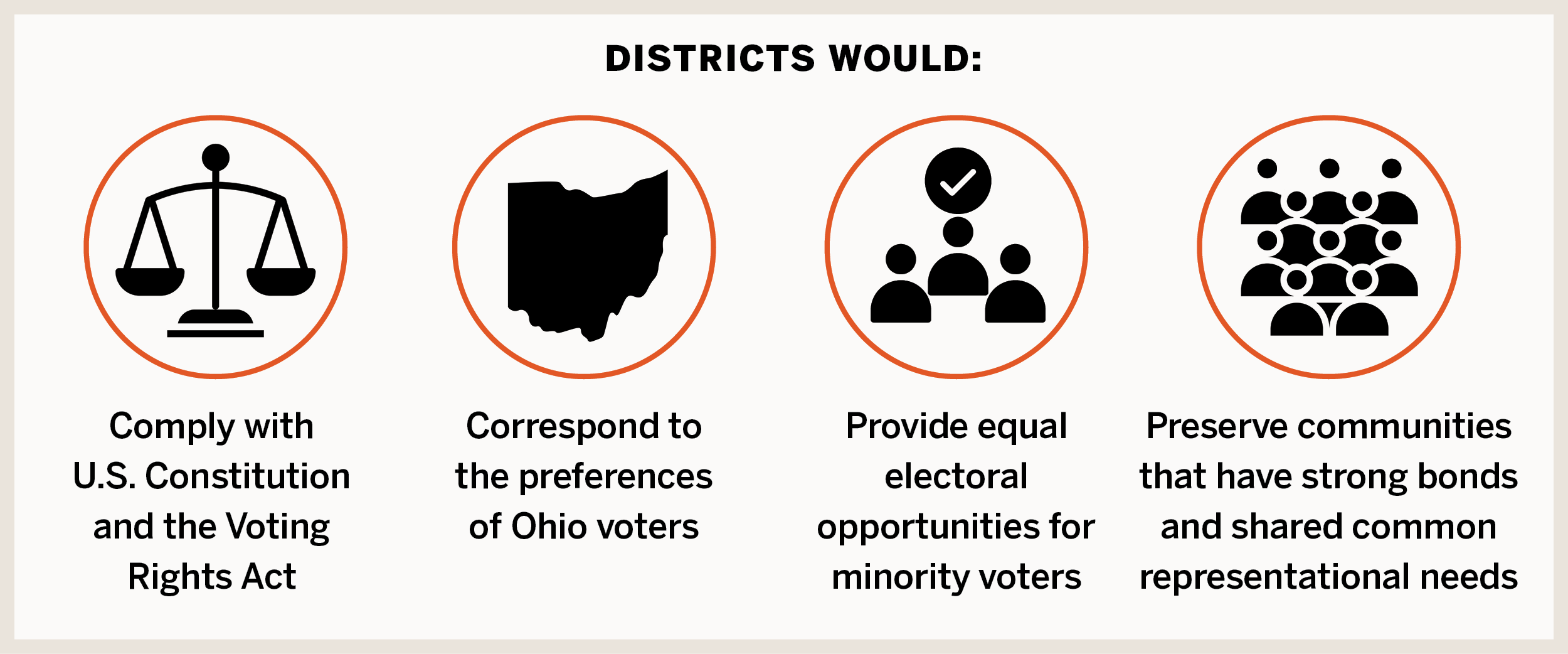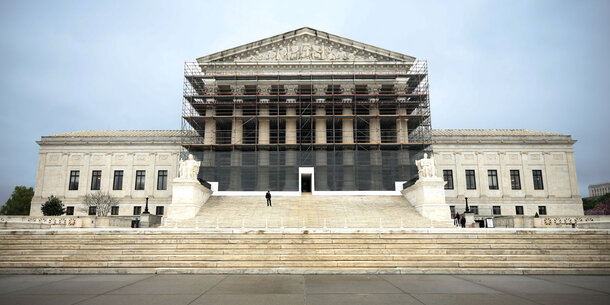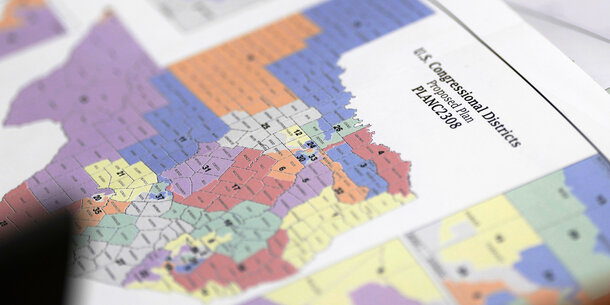The Citizens Not Politicians campaign in Ohio seeks to pass a constitutional amendment that would completely overhaul the state’s redistricting process. It would replace the current politician-controlled system with one that centers citizen involvement and accountability in drawing Ohio’s congressional and legislative maps. For this amendment to become law, the campaign must gather over 413,000 valid signatures and Ohio voters must then approve the measure.
The proposed amendment would principally do four things:
Empower Ohioans to draw district maps
A citizens’ redistricting commission would replace the politicians who have been responsible for gerrymandering Ohio for decades. The 15-member commission would consist of a fair-minded and representative cross section of Ohioans that fully reflects the political, geographic, and demographic diversity of the state.

Current politicians, political party officials, candidates, or anyone who served in or ran for office in the prior six years would be prohibited from serving on the commission, as would the employees, contractors, or immediate family members of disqualified individuals.
To make sure the best candidates are chosen, a bipartisan panel of retired Ohio judges would oversee the selection process and ensure commissioners do not have conflicts of interest, are compromise-oriented and fair-minded, and possess skills and experiences necessary for success.
Promote transparency and public accountability
Once seated, commissioners would look to the public to guide redistricting decisions through hearings and comment submissions so the maps give all Ohio communities fair representation.

All data relevant to map drawing would be made publicly available, and all hearings would be live streamed to encourage broad public involvement. The commission would also release a report explaining its decisions once final maps have been chosen.
Produce fair and impartial district maps
Passing maps would require the affirmative vote of nine commissioners and must include the support of at least two Republicans, two Democrats, and two independents. All maps would need to adhere to clear, prioritized criteria so that districts comply with federal requirements (including the Voting Rights Act), center community interests, and reflect the election preferences of Ohio voters.

Establish a system of checks and balances
The Citizens Not Politicians Amendment creates checks and balances at every phase of the process and incentivizes compromise and collaboration among commissioners. These safeguards would provide critical assurance that rogue actors cannot infiltrate or derail the commission’s work. To ensure that redistricting is done in the public interest and that gerrymandering in Ohio is a thing of the past, the measure includes the following safeguards:


